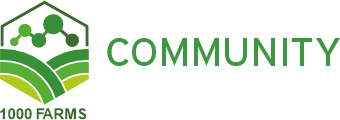Click on the link below to view the webinar by Mouritala Sikirou on 20 March 2025, presenting his talk Unveiling the potentiality of the newly bred cassava clones in smallholder farmers’ fields of different agro-ecologies in DR Congo using the tricot approach
Presenter Bio: Mouritala is the head of Regional Cassava Breeding at the International Institute of Tropical Agriculture (IITA), Kinshasa, DR Congo. He has 20 years’ experience in plant breeding research and teaching, including 10 years as a university senior lecturer. Previously as a researcher at INRAB, he released three rice varieties and led lowland rice breeding in Liberia. Since joining IITA in 2018, he has released four disease-resistant cassava varieties in Central Africa and is planning tricot-based variety releases for this year.
For more info contact Mouritala at: m.sikirou@cgiar.org
Summary: Before implementing tricot, 23 trials with 20 cassava clones were conducted across INERA stations for two cropping seasons, leading to the selection of six advanced clones for evaluation by 450 farmers in nine provinces of DR Congo. Farmers, including smallholders, processors, and consumers, assessed the varieties based on socio-cultural traits, with MVZ2016-364 excelling for the fresh market, MVZ2018-016 preferred for Fufu and mechanization, and biofortified GKA2016-214 gaining interest for chikwangue in Kongo Central. Despite challenges in Eastern DR Congo, 350 tricot fields have been harvested, and the naming ceremony for official release and integration into the seed system is expected in June 2025.
| Question | Answer |
|---|---|
| Is it possible to conduct tricot from already released varieties? | Yes you can test your already released varieties with new varieties. We had Obama and Ilona in our trials, which had already been released. |
| When you characterize your breeds with the consumers do you use other methods for consumer preference evaluation, like the jar method, or is it just only the tricot? | What we do is to first define the trait that farmers use in terms of consumers, then for the consumption, they have their own traits. The breeders don’t intervene, don’t influence their choice, but we record what they want, and then we work based on that. |
| We have a project in Madagascar where we are trying to introduce the Euro cassava because of the malnutrition situation in many region of the country. But unfortunately here, cassava is not a main staple food. My question is, how do you think we can go about to make sure that we can have consumer preference when cassava is not a staple food. And then also, there is a good interest from the private sector to do some cassava flour to reduce the importation of the wheat, so I would like you maybe to share your experience and how, based on what you have done in RDC, how we can go about Madagascar | We plan to introduce and distribute improved cassava varieties beyond the DRC and Central Africa, working with farmers in new countries to evaluate and adopt them. The goal is to let farmers compare products and decide which varieties perform best. We collaborate with Dr. Abbas to develop products like cake and high-quality cassava flour, especially from a very white variety that could substitute wheat in bread. These research products will be shared directly with projects like yours in Madagascar without requiring funding for new research. Once evaluated and adopted locally, the varieties can be officially released and widely used within about two years |
| I thought that in tricot the farmers’ variety is among the 3 tested as a control? i.e. the ABC. Why did we have to separate it as D? | The D is the local variety that is the preferred variety in the area. We can compare it with the other 3 varieties in terms of traits, but the problem is we cannot analyse it the same as the other 3 in the ClimMob software. We will discuss this with the people that develop the software. |
| Does this integrate nicely with variety release in DRC? | This is the first time the tricot approach is being used in the DRC to support the variety release system. By involving farmers, extension agents, seed regulators, and national catalog data collectors, the goal is to strengthen the seed system and ensure consistency in variety naming across regions. The collaborative effort ensures that innovations are widely understood, validated, and integrated into official systems. This approach also ensures only properly tested and documented varieties are eligible for release, reinforcing the role of research in the process. |
| From the products on the tricot, how do you wish to evaluate continued preference over the old variety? | When we tested the new crop varieties, we compared them with the old ones and worked closely with experienced farmers who knew more than we did. I always listened carefully to them because their knowledge helped me understand how to improve our work. The new varieties performed better, which means more income for farmers and better opportunities for their families. We worked with extension teams and national program representatives to ensure consistency across regions. This approach also supports breeders like us by making sure only well-researched varieties get released. |
| When you are taking the data for the yield, how do you ensure that there is a level of consistency? | We don’t have enough staff to harvest all the trials together at the same time. We harvest the trials gradually, and then we believe that we can take that in consideration using the the the rain data we have also our GPS. And then with the GPS, we can collect some datas using the the satellites, and then we have our biometrician capture all those gaps in terms of time so that we can have accurate analysis to to release. |

